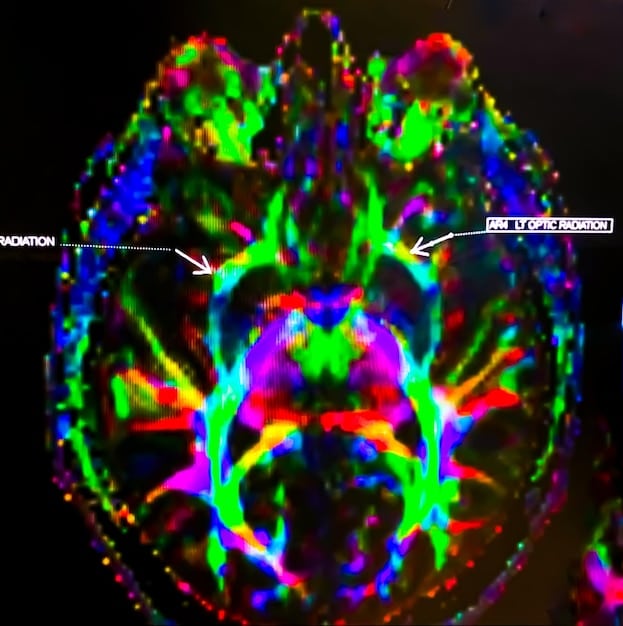Unlock Wellness: Gratitude Techniques for a Happier You

Discover the power of gratitude through techniques proven to significantly boost your overall well-being, fostering a more positive and fulfilling life by as much as 20%.
Ever wondered if a simple shift in perspective could truly make a difference in your overall well-being? The answer is a resounding yes! By learning to discover the power of gratitude, implementing proven techniques, and consistently practicing thankfulness, you can significantly improve your mental, emotional, and even physical health, potentially increasing your overall well-being by 20%.
Understanding the Science of Gratitude
Gratitude isn’t just a fleeting feeling; it’s a powerful emotion with profound effects on our brains and bodies. Scientific research has consistently demonstrated the positive impact of gratitude on various aspects of our lives.
Gratitude and the Brain
Studies using fMRI technology have shown that experiencing and expressing gratitude activates brain regions associated with reward, pleasure, and social bonding. Specifically, the ventromedial prefrontal cortex, which plays a crucial role in decision-making and emotional regulation, exhibits increased activity when we feel grateful.
The Body’s Response to Thankfulness
Furthermore, gratitude has been linked to reduced levels of cortisol, the stress hormone, leading to lower blood pressure and improved cardiovascular health. When we focus on what we’re thankful for, our bodies enter a state of relaxation, promoting physical well-being. Experiencing gratitude is more than just a mental exercise. It sets off a cascade of positive biological effects.
- Reduced stress and anxiety levels.
- Improved sleep quality and duration.
- Stronger immune system function.
- Increased resilience to adversity.
In essence, cultivating gratitude can literally rewire your brain and improve your physical health. This understanding of how gratitude impacts our brain and body is the first step towards harnessing its potential for improved well-being.

Proven Techniques to Cultivate Gratitude Daily
Integrating gratitude into your daily routine doesn’t require grand gestures. Simple, consistent practices can profoundly impact your overall well-being. Here are some proven techniques to help you cultivate a grateful mindset.
The Gratitude Journal
One of the most popular and effective methods is keeping a gratitude journal. Dedicate a few minutes each day to write down things you’re thankful for. These can be big or small, from a sunny day to a supportive friend.
Gratitude Meditations
Another powerful technique is gratitude meditation. During meditation, focus your attention on feelings of gratitude, visualizing the things and people you appreciate. Allow yourself to fully experience the positive emotions associated with gratitude.
- Start with five minutes a day and gradually increase the duration.
- Focus on the sensations in your body as you feel grateful.
- Extend your gratitude to yourself and others.
Another technique involves expressing your appreciation verbally to people in your life. Call someone to tell then why you appreciate them, or write a letter. This can significantly deepen your relationships and foster a sense of connection.
The Transformative Power of a Gratitude Letter
Writing a gratitude letter involves expressing your appreciation in writing to someone who has positively impacted your life. This powerful exercise has been shown to have transformative effects on both the giver and receiver.
How to Write a Gratitude Letter
Start by identifying someone who has made a significant difference in your life. Next, write a letter expressing your gratitude in detail. Be specific about what they did and how it affected you. Describe the positive impact and express your heartfelt appreciation.
Delivering Your Message of Gratitude
If possible, deliver the letter in person and read it aloud to the recipient. Witnessing their reaction can be incredibly moving and fulfilling. If you can’t deliver it in person, sending the letter by mail or email is still a meaningful gesture. The act of expressing your gratitude in such a tangible way strengthens bonds and fosters positive emotions.
- Reflect on specific moments of gratitude towards the person.
- Express how the action or relationship has made you a better person.
- Share how the gratitude continues to impact your life today.
This act brings transformative effects to the receiver, helping them feel happy and appreciated. Writing a letter deepens the satisfaction of expressing gratitude and enhances well-being for both individuals.
Overcoming Obstacles: Gratitude in Challenging Times
Practicing gratitude can be challenging, especially during difficult times. When facing hardship, it’s easy to focus on what’s going wrong rather than what’s going right. However, it’s during these times that gratitude can be most beneficial to your well-being.
Shifting Your Perspective
One strategy is to actively seek out the small blessings in your life, even amidst the chaos. Maybe it’s the support of a loved one, a moment of peace in nature, or simply having a roof over your head.
Reframing Negative Thoughts
Another technique is to reframe negative thoughts by focusing on the lessons you can learn from challenging experiences. Ask yourself, “What can I be grateful for in this situation?”

- Practice mindfulness to stay present and appreciate simple things.
- Use affirmations to refocus your mind on the positive.
- Ask yourself “What can I be grateful for right now?”
Challenges can often present opportunities for growth and resilience, and by practicing gratitude in the face of adversity, you can cultivate a more positive and hopeful outlook.
Measuring the Impact: Tracking Your Gratitude Journey
To truly discover the power of gratitude, tracking your progress can be a strong encouragement and a testament to its effectiveness. Regularly assessing your well-being provides valuable insights into how much gratitude impacts your life.
Self-Assessment Techniques
Self-assessment is a great starting point, where you write about your feelings and thoughts before starting this practice and then continuing the measurement as you progress. It may involve journaling about your emotions and experiences related to gratitude. Consider tracking your mood, energy levels, and overall satisfaction with life on a weekly basis, and use those metrics to help influence your perception.
Tools for Tracking and Measuring Gratitude
Try some apps and online resources to help you facilitate and to standardize your assessments, or keep a written personal journal to reflect on your emotions and experiences. Many health apps make it easy to record you progress on you gratitude journey.
- Mood trackers and happiness scales provide quantitative measures of well-being.
- Journaling prompts to help guide your reflection on gratitude.
- Personal notes outlining feelings of gratitude.
The more consistently you measure and reflect, the more likely you are to notice and reinforce the positive changes in your life, further solidifying gratitude as a cornerstone of your personal development.
Sustaining Gratitude: Long-Term Habits for a Happier Life
While initial enthusiasm for gratitude practices can be high, sustaining these habits over the long term requires conscious effort and integration into your daily lifestyle.
Turning Gratitude into a Lifestyle
Commitment is key. Set specific, achievable goals for incorporating gratitude into your routine. For example, you might commit to writing in your gratitude journal for five minutes every morning or expressing your appreciation to at least one person each day.
The Importance of Consistency
Just like any other habit, consistency is crucial. Even on days when you don’t feel like it, make an effort to engage in gratitude practices. The more you practice, the more natural and ingrained it will become. Remember that creating a long-term gratitude is a marathon, not a sprint.
- Review and adjust your practices as needed to keep them fresh and engaging.
- Seek support from friends, family, or a therapist to help you stay on track.
- Celebrate your progress and acknowledge the positive changes you’ve experienced.
By making gratitude a cornerstone of your life, you can continue to reap its benefits for years to come, leading to a more fulfilling and joyful experience.
| Key Point | Brief Description |
|---|---|
| 😊 Daily Journaling | Write down things you’re thankful for each day. |
| 🙏 Gratitude Meditations | Focus your attention on feelings of gratitude during meditation. |
| ✍️ Gratitude Letter | Express appreciation in writing to someone impactful. |
| 🎯 Track Progress | Assess your well-being to understand gratitude’s impact. |
[Frequently Asked Questions]
▼
Some people notice positive shifts almost immediately, while others may see changes over several weeks or months. Consistency is key, so stick with your gratitude practices even if you don’t see instant results. You will see results over time!
▼
Start small – even appreciating the simplest things can shift your perspective. The warmth of your blanket, a sunny day, or the taste of your morning coffee, remember that these are small pleasures that can all make a difference and shift your mentality.
▼
While gratitude is not a cure for mood disorders, it can be a potent supplement to professional treatment. Studies show it can reduce stress, increase happiness and improve mental resilience. It can really shift your perspective.
▼
No, sharing is optional, but expressing gratitude to others can deepen your relationships and further enhance your feeling of well-being. Be sincere and let others know when they impact your life.
▼
Lead by example and involve them in your gratitude practices. Encourage them to keep a gratitude journal or express their thanks verbally. It would be a good habit for them to start now, and there are tons of resources.
Conclusion
By incorporating gratitude practices into your daily life, you can unlock the power of a more positive and fulfilling existence. Experiment with different techniques, find what resonates best with you, and commit to making gratitude a cornerstone of your journey towards well-being.





